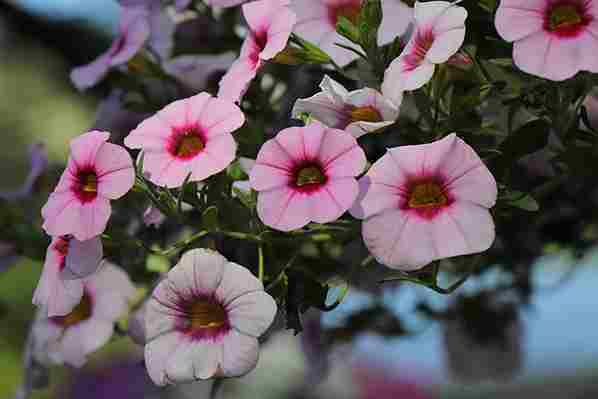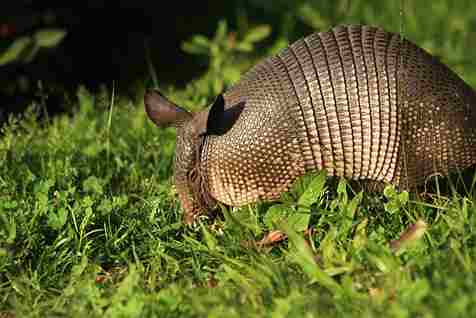Do Deer Eat Kniphofia? (3 Ways To Stop Them)
If you’re an avid gardener or someone who enjoys planting flowers, you might have wondered whether deer have a taste for kniphofia, also known as Red Hot Pokers. So, do deer eat kniphofia?
Deer typically don’t eat kniphofia. While the plant contains no toxic parts, they tend to avoid it.
The chances of your kniphofia getting decimated by deer are very slim, but it can still happen. This is why it’s good to always prepare for the worse. In this post, we will focus on some of the best ways to keep deer from eating your kniphofia.

Is Kniphofia Deer Resistant?
Yes, kniphofia is considered deer-resistant. This means they are not a meal choice for the hoofed mammals. However, it’s worth knowing that no plant is entirely deer-proof.
So, even though deer won’t actively seek out your kniphofia, there’s still a chance it could be eaten. This is more likely to occur when food is scarce.
Deer are not the only ones that avoid kniphofia; rabbits and other garden pests also tend to leave the plant alone.
Do Deer Like Kniphofia?
This largely depends on the local deer population. But generally, deer don’t like hardy plants like kniphofia.
Kniphofia has grass-like foliage, which is very similar to ornamental grass. The leaves are usually tough with sharp edges. This makes them less palatable and unattractive to a browsing deer.
So most deer would normally stay away from the plant if they can find other things to eat.
Is Kniphofia Poisonous to Deer?
Kniphofia spp., or Red Hot Poker, is not known to be toxic to deer or other wildlife. The flowers are safe for consumption.
While deer might not actively seek them out, eating them in small quantities should not cause any harm. This lack of toxicity in the plant should come as good news as it doesn’t pose a huge threat to local wildlife.
How to Keep Deer from Eating Kniphofia?
There are different methods you can explore to keep deer out of your garden. However, they are three we found to be most effective:
Repellent Sprays
This is probably the easiest and one of the most effective ways to keep deer from eating your kniphofia. For the best deer repellent, we highly recommend Bobbex.
The Bobbex Deer Repellent employs smell and taste to deter deer from your yard. Not only for deer; it also works for moose and elk.
It comes in liquid form and uses natural ingredients, which makes it environmentally friendly. It’s harmless to all wildlife as well as pets such as dogs, cats, and even aquatic life. It’s completely safe to use and can be easily applied to foliage.
You can find more instructions on how to use it on the label.
Ultrasound
Deer have a strong sense of hearing, which makes them very sensitive to the sound coming from an ultrasound device. They usually prefer areas that are quiet so they can go undetected. Having an ultrasound stationed in your garden can discourage them from coming close to the area.
The good thing about ultrasound is that it is barely heard by humans, but animals can hear it. So, even when you set up the device, it won’t disturb the peace in your garden.
For the best ultrasound device, consider the Animal Repeller Ultrasonic. The device usually spreads ultrasound when it detects some movement in the garden. It comes with a motion sensor and flashing lights and works for various animals, including deer, rabbits, squirrels, and raccoons.
Fencing
Another option that seems to work well is to install a fence. Installing a tall, sturdy fence around your garden is one of the most effective ways to keep deer out. Opt for a fence that is at least 8 feet tall, as deer are skilled jumpers.
For the best protection, you may want to combine two or all three methods to deter deer. If you’re looking for ideas, consider the Tenax Select Deer Fence
What Flowers Are Deer Resistant?
Some popular flowers that are considered deer resistant include:
- Lavender (Lavandula spp.): The strong aroma of lavender is typically unappealing to deer, making it a good choice for deer-prone areas.
- Foxglove (Digitalis spp.): Foxglove contains compounds that are toxic to both humans and animals, making it an unattractive option for deer browsing.
- Daffodils (Narcissus spp.): The bulbs of daffodils contain toxic substances, deterring deer from consuming them.
- Russian Sage (Perovskia atriplicifolia): This aromatic and drought-tolerant plant is less likely to be eaten by deer.
- Salvia (Salvia spp.): Salvias come in various colors and sizes and are often overlooked by deer due to their pungent smell.
As earlier indicated, even though these plants are deer resistant, they can still be eaten by deer in periods of food shortage.
Related topics:





